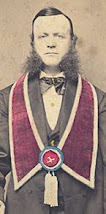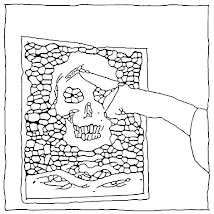Some interesting ephemera from Daido Moriyama's history:
Postcard advertising Moriyama's first book of color photography, Color (Sôkyû-sha, 1993)
Stiff stock, 8.5 x 6 inches
Signed by Moriyama in English on the front
Stiff stock, 8.5 x 6 inches
Signed by Moriyama in English on the front


Postcard advertising books by Moriyama, found in a copy of Memories (Sôkyû-sha, 1999)
Stiff stock, 4 x 5.74 inches
Stiff stock, 4 x 5.74 inches


Moriyama intruded on the popular American consciousness in 1999 when Stray Dog, the first retrospective exhibition of his photographs anywhere in the world, opened at the San Francisco Museum of Modern Art on May 14 of that year. From there it moved to the Japan Society in New York City, where it opened on September 23, 1999, concurrent with a show of all the images from his 1972 book, The Hunter, at the Metropolitan Museum of Art, NYC. Also in New York at the same time were exhibits at the Laurence Miller Gallery and a show of work and books from contributors to the magazine Provoke, which included Moriyama, at the Roth Horowitz Gallery.
This is the point at which he broke through in the U.S. with a hammer. He was everywhere at once. There was the book that accompanied the SFMoMA exhibit, Stray Dog, which is a nice overview of his work; he was the cover of Artforum, October, 1999, issue; the subject of innumerable articles. From that point on, I'd venture that he was a "known brand" here in the U.S.A., so much so that the magazine The Week, sort of a weekly USA Today, ran a review of one of his shows this past February.
To open the show at the Japan Society in 1999, a conversation was held between Moriyama and John Szarkowski. I don't recall it being too illuminating or, as Szarkowski later said, "That was a hard slog." What he meant I think is that, despite a translator, no one was quite understanding what the other was getting at so none of us came away any wiser. After the conversation was the opening for the show at which one might have seen Moriyama and Robert Frank huddled together at one point, presumably trying to understand what the other was getting at.
What follows are a number of items from the Stray Dog tour.
The ticket stub to the conversation between Szarkowski and Moriyama:

The press release:


The brochure for the show
5 x 10 inches, unfolding thrice to 20 x 10 inches
5 x 10 inches, unfolding thrice to 20 x 10 inches

Both gatefolds open:

Back cover:

The September/October 1999 issue of the Japan Society Newsletter
12 pages; 8.5 x 11
12 pages; 8.5 x 11


After New York, the Stray Dog wandered off to Switzerland and then Essen before returning to the U.S. in August, 2000, and appearing at the Harvard University Art Museums, Cambridge, MA.
The brochure
9.75 x 6.25 inches, unfolding twice to 9,75 x 17 inches
9.75 x 6.25 inches, unfolding twice to 9,75 x 17 inches

Top flap lifted up:

Bottom flap folded down:

Back side, signed by Moriyama in English and Japanese

Gallery card announcing a booksigning in conjunction with the release of
'71-NY (PPP Editions, 2002) at the Roth Horowitz Gallery
Stiff, matte card stock
9 x 6 inches
'71-NY (PPP Editions, 2002) at the Roth Horowitz Gallery
Stiff, matte card stock
9 x 6 inches


Announcement for the show of work from the same book at the same gallery
12.5 x 9.25 inches, folded twice
Front:
12.5 x 9.25 inches, folded twice
Front:

Back:

Opened once:

Fully opened:

And finally, I don't where this is from though it might have published in 2002. It's 5 x 7 inches and unfolds three times to a 20 x 14 poster.
Folded, one side:

Folded, the other side:

Unfolded all the way:

While poking around the net I found photos of a retrospective of Moriyama's work held in Cologne, Germany, in 2007. I hadn't noticed before but the image of the "stray dog" appears in various publications flopped one way or the other. The photo is included in The Hunter, 1972, in the orientation seen below but is flopped on both the cover of Stray Dog and when reproduced inside.
There was a room in the Cologne show of just his pickled embryo shots. As the coda to Nippon Theater (Muromachi-shobo, 1968) I think the images are terrifying. After the chaotic careen through contemporary Japanese culture--from want to plenty, despair to ecstasy, art to commerce, tradition to change, from one maniacal grimace to deadpan stare and back to crazed laughter--you come full-stop against these calm, placid images of floating humans-never-to-be, framed in black--the first page of which is simply a light rectangular frame on a black page. The book feels like roaring full-speed through life itself, grabbing everything within reach. And then it just ends…at the void, the existential void that is so often, and in this case appropriately, applied to Moriyama's work. You end up staring into a dark space where life-never-started and yet is suspended forever, a grotesque reminder of the Eros/Thanatos cycle.
And I find this room with embryo wallpaper to be a grotesque reminder of design gone bad. Which I'll admit is unfair since I don't know what precedes this room or follows so I don't know what the "experience" of the exhibit is and how this fits in. But it just seems silly.
Just so there is no misunderstanding here: Aside from Moriyama's work being some of my favorite to interact with, I think that Nippon Theater is one of the best photobooks ever produced. I think it's right up there with Klein's New York in terms of sequencing, editing and design.
If you're into Daido, you're well-aware that he's a marketing machine these days. While as he doesn't have nearly as many books published as Araki has (but maybe as many as Parr) he has more than enough to keep one searching for years to fill in the gaps on the bookshelf. These days, there is all sorts of other stuff. (I haven't found a bobble-head version of him yet, but there must be one somewhere.)

There is a documentary called Daido Moriyama: Stray Dog of Tokyo. It was directed by Kenjiro Fujii, made in 2001 and released at the beginning of this year on DVD, runs 84 minutes and can be found on Amazon as well as elsewhere.

There is a net-store, TokyoBaron.com that sells all things Japanese including Moriyama (and other Japanese photograhers) t-shirts (though they all seem to be sold out.) Go here to browse.
Azito, an online gallery, has just partnered with Daido to produce five limited edition prints from his 2009 book Northern. The book featured work shot in Hokkaido as a way of forcing himself back into photography but which he never printed. Info about the prints can be found here. The book is supposedly out-of-print but can still be purchased through Amazon Japan. (Azito also just published a book of work by Toshio Shibata with accompanying prints.)










































